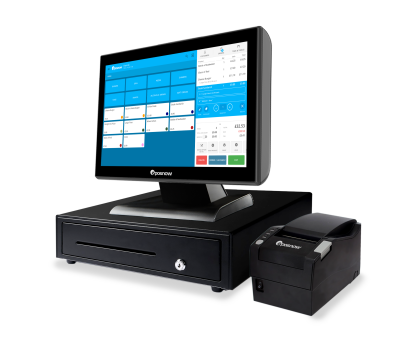Consumer Spending Continues to Rise in the Summer
The Australian economy has had its ups and downs over the last few years. With the pandemic, lockdowns, and a change in government, you’d be forgiven for thinking that we weren’t in the best economic shape.
The happy news is that this doesn’t seem to be the case anymore. Despite the difficulties of the last couple of years, consumer spending rose over the summer. This increase should go some way to help stabilise the retail and hospitality industries that were both hard hit by the struggling economy.
In this blog, we’ll be examining the consumer spending rise, what’s causing it, and what it means for Australian businesses.*
What’s rising?
Data collected for the Commbank Household Spending Intentions Index [1] indicated that consumer spending rose by 0.9% in June 2022. While this may seem like a small bump rather than a massive rise, this 0.9% represents a much larger trend in the Australian economy.
One sector that has seen excellent growth over the last year was transportation. A report [2] from the National Retail Association (NRA) noted that Australians returning to the office saw transportation spending rise by 6.7% in June 2022.
This return to the office also saw demand for work clothing increase. Services such as clothing stores, dry cleaners, and tailors have all reported bumps in sales. This shows how interconnected the economy can be.
The closure of the border during the pandemic was a huge hit to the travel industry. Luckily, it seems as if the industry will be able to make a comeback. Travel spending intentions rose by 1.5% in June 2022 and a massive rise of 71.3% in the year.
Travel is a vibrant and wide-ranging industry that features many different businesses. This can be seen in the data from the NRA that notes that travel agencies, cruise lines, airlines, airports, hotels, motels, tourist attractions, sports and recreational camps, and bus lines all saw an increase in profit.
Gain all the advantages of a POS system with detailed, flexible, downloadable reports, and so much more:
- Manage and update products quickly with easy-to-use software
- Expand your business into multiple channels and integrate with a variety of online platforms
- Manage multiple locations and salespoints with multi-site management
- Keep queues short with streamlined, modifiable sales processes
- Choose a setup that suits you with software and hardware options

Why are these rises happening?
These rises are very exciting for retailers but it’s important to understand why they’re happening.
Generally, the long-awaited easing of lockdowns has been the biggest driver of growth. The rises in travel intention spending and workwear are both related to borders and offices opening back up. The pent-up desire to go on holiday is a powerful one!
In all areas of growth, we can see the shadow of inflation lurking in the background. CommBank has reported a third consecutive monthly rise in interest rates. This means that everything is generally more expensive and can explain some of the rises in consumer spending.
How could inflation affect the economy?
While we’ve mentioned inflation above, many people are unsure of what it actually is and how it can affect the economy. In simple terms, inflation refers to the economic phenomenon in which the purchasing power of a country’s currency decreases over time. Deflation occurs when the purchasing power increases.
Inflation’s impact on the economy is generally a negative one. As purchasing power decreases, consumers find that they can no longer afford to spend as freely as they usually would. While this might give the economy an initial boost as more money is spent, this rise in expense will cause consumers to stay home and depress economic growth in the long term.
The real pernicious part of inflation is that it reinforces itself. As inflation rises, workers will rightfully ask for higher wages to keep up with living costs. If these wage rises are handled incorrectly, it can lead to a wage spiral and more inflation. A Wage spiral is an economic concept where rising wages lead to rising prices, leading to rising inflation rates.
Where is the economy heading?
Despite the threat of inflation, things are generally looking up for the Australian economy. In a recent report from the Organisation for Economic Co-operation and Development (OECD), they estimated that Australia’s real GDP will rise by 4.2% in 2022 and 2.5% in 2023. [3]
In addition to these rises in the Australian GDP, workers will be pleased to hear that wages are also projected to go up. This will go some of the way to fighting inflation and putting more money in the consumer’s pocket. In turn, this will help businesses as more and more of their customers return to the shops.
These rises will come as a welcome recovery after the pandemic and the widespread damage called by the severe flooding in Queensland and New South Wales. While retailers and hospitality businesses should still prepare for inflation, they should be generally upbeat that the economy is on the up after a difficult few years.
*All information in this blog is accurate as of July 2022 and, unless stated otherwise, is sourced from the CommBank Household Spending Intentions Index and the National Retail Association.
Get ready for the rise
As the economy improves, businesses need to be ready for a new rush of customers. The Epos Now Complete Solution is perfectly positioned to meet the needs of your customers and your business.
If you’re interested in finding out more about Epos Now, get in touch with our expert team below.




